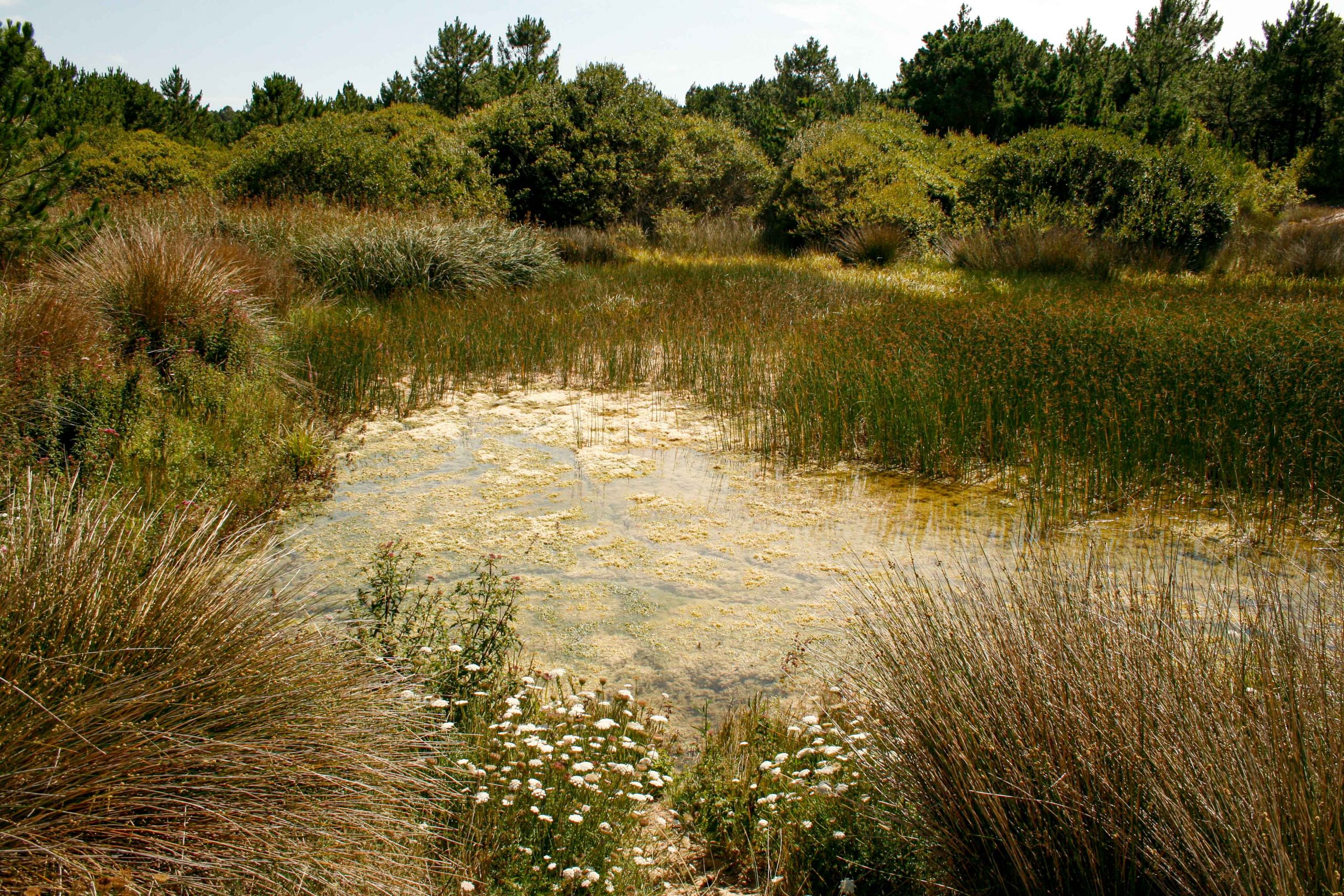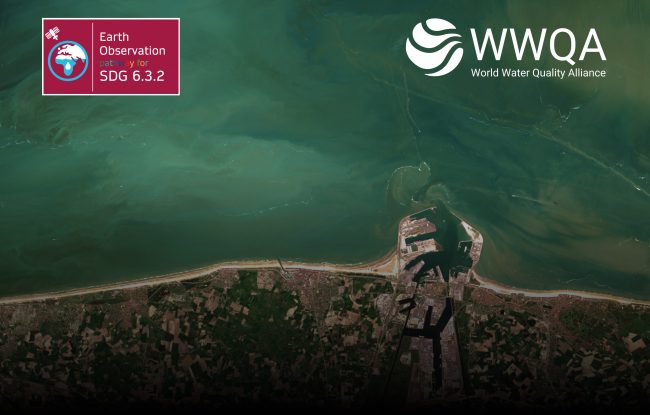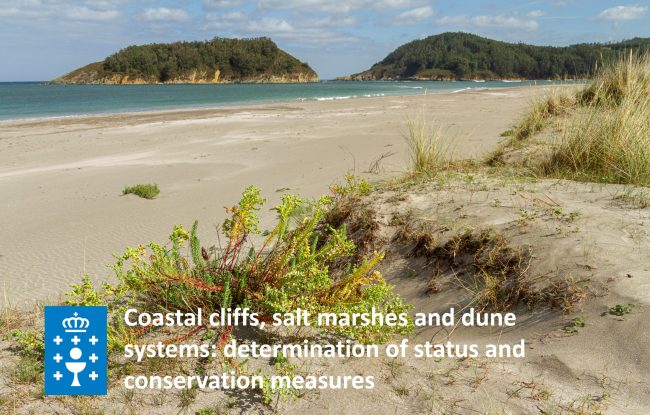DETALLES DEL PROYECTO
FECHA: 2022-2023
CATEGORÍA: Others
Standing and running waters: determination of conservation status, drafting of conservation measures and design of a monitoring system for habitats of community interest in Galicia
Project developed for the Xunta de Galicia, co-financed by the European Agricultural Fund for Rural Development (EAFRD) at 75% under the Rural Development Programme 2014-2020.
The work consists of determining the conservation status, drafting conservation objectives and measures in each Special Area of Conservation and designing a monitoring system for the habitat types of Community interest of standing water (1150*, 2190 and subgroup 31) and running water (3260 and 3270) in Galicia.
The objective is to respond to the requirements of the Habitats Directive (DC 92/43/EEC) which establishes that the European Natura 2000 network must ensure that habitat types of Community interest are maintained or, where necessary, re-established in a favourable state of conservation, by establishing the necessary conservation measures.
Likewise, the Master Plan for the Natura 2000 network in Galicia, as the Natural Resources Management Plan that regulates the Natura 2000 network, establishes as priority management objectives for these protected areas to improve and complete the inventory of freshwater habitat types, in particular standing waters, as well as the inventory of their characteristic species, to define the current and favourable conservation status of lake systems, and to identify their main threat factors, as well as to develop a protocol for monitoring their conservation status, to achieve a good ecological and chemical status of watercourses, as defined in the Water Framework Directive (Directive 2000/60/EC), and to improve the ecological connectivity of watercourses in order to prevent biodiversity loss, facilitate genetic exchange and the movement of flora and fauna species; o enhance the ecological connectivity of watercourses in order to prevent the loss of biodiversity, facilitate genetic exchange and the movement of flora and fauna species.
This work therefore aims to comply with these two basic regulations, the Habitats Directive and the Master Plan for the Natura 2000 network, as well as being the preliminary work for the design of specific management plans as part of the development of the Master Plan.
The project consists firstly in establishing the criteria and methodology for the identification of the habitat types of standing and running waters in Galicia.
Secondly, an assessment of the conservation status of the habitat types concerned in the Natura 2000 sites is carried out, followed by the definition of conservation measures and objectives for the habitat types in each Natura 2000 site with significant presence.
Finally, a definition of the criteria for monitoring the conservation status of the habitat types of standing and running water, the selection of the localities to be monitored and the proposal of associated monitoring protocols are carried out.
The complete list of habitat types of Community interest in the project are:
Project developed for the Xunta de Galicia, co-financed by the European Agricultural Fund for Rural Development (EAFRD) at 75% under the Rural Development Programme 2014-2020.
The work consists of determining the conservation status, drafting conservation objectives and measures in each Special Area of Conservation and designing a monitoring system for the habitat types of Community interest of standing water (1150*, 2190 and subgroup 31) and running water (3260 and 3270) in Galicia.
The objective is to respond to the requirements of the Habitats Directive (DC 92/43/EEC) which establishes that the European Natura 2000 network must ensure that habitat types of Community interest are maintained or, where necessary, re-established in a favourable state of conservation, by establishing the necessary conservation measures.
Likewise, the Master Plan for the Natura 2000 network in Galicia, as the Natural Resources Management Plan that regulates the Natura 2000 network, establishes as priority management objectives for these protected areas to improve and complete the inventory of freshwater habitat types, in particular standing waters, as well as the inventory of their characteristic species, to define the current and favourable conservation status of lake systems, and to identify their main threat factors, as well as to develop a protocol for monitoring their conservation status, to achieve a good ecological and chemical status of watercourses, as defined in the Water Framework Directive (Directive 2000/60/EC), and to improve the ecological connectivity of watercourses in order to prevent biodiversity loss, facilitate genetic exchange and the movement of flora and fauna species; o enhance the ecological connectivity of watercourses in order to prevent the loss of biodiversity, facilitate genetic exchange and the movement of flora and fauna species.
This work therefore aims to comply with these two basic regulations, the Habitats Directive and the Master Plan for the Natura 2000 network, as well as being the preliminary work for the design of specific management plans as part of the development of the Master Plan.
The project consists firstly in establishing the criteria and methodology for the identification of the habitat types of standing and running waters in Galicia.
Secondly, an assessment of the conservation status of the habitat types concerned in the Natura 2000 sites is carried out, followed by the definition of conservation measures and objectives for the habitat types in each Natura 2000 site with significant presence.
Finally, a definition of the criteria for monitoring the conservation status of the habitat types of standing and running water, the selection of the localities to be monitored and the proposal of associated monitoring protocols are carried out.
The complete list of habitat types of Community interest in the project are:
- 1150* Coastal lagoons
- 2190 Humid dune slacks
- 3110 Oligotrophic waters containing very few minerals of sandy plains (Littorelletalia uniflorae)
- 3130 Oligotrophic to mesotrophic standing waters with vegetation of the Littorelletea uniflorae and/or of the Isoëto-Nanojuncetea
- 3140 Hard oligo-mesotrophic waters with benthic vegetation of Chara spp.
- 3150 Natural eutrophic lakes with Magnopotamion or Hydrocharition - type vegetation
- 3160 Natural dystrophic lakes and ponds
- 3260 Water courses of plain to montane levels with the Ranunculion fluitantis and Callitricho-Batrachion vegetation
- 3270 Rivers with muddy banks with Chenopodion rubri p.p. and Bidention p.p. vegetation











